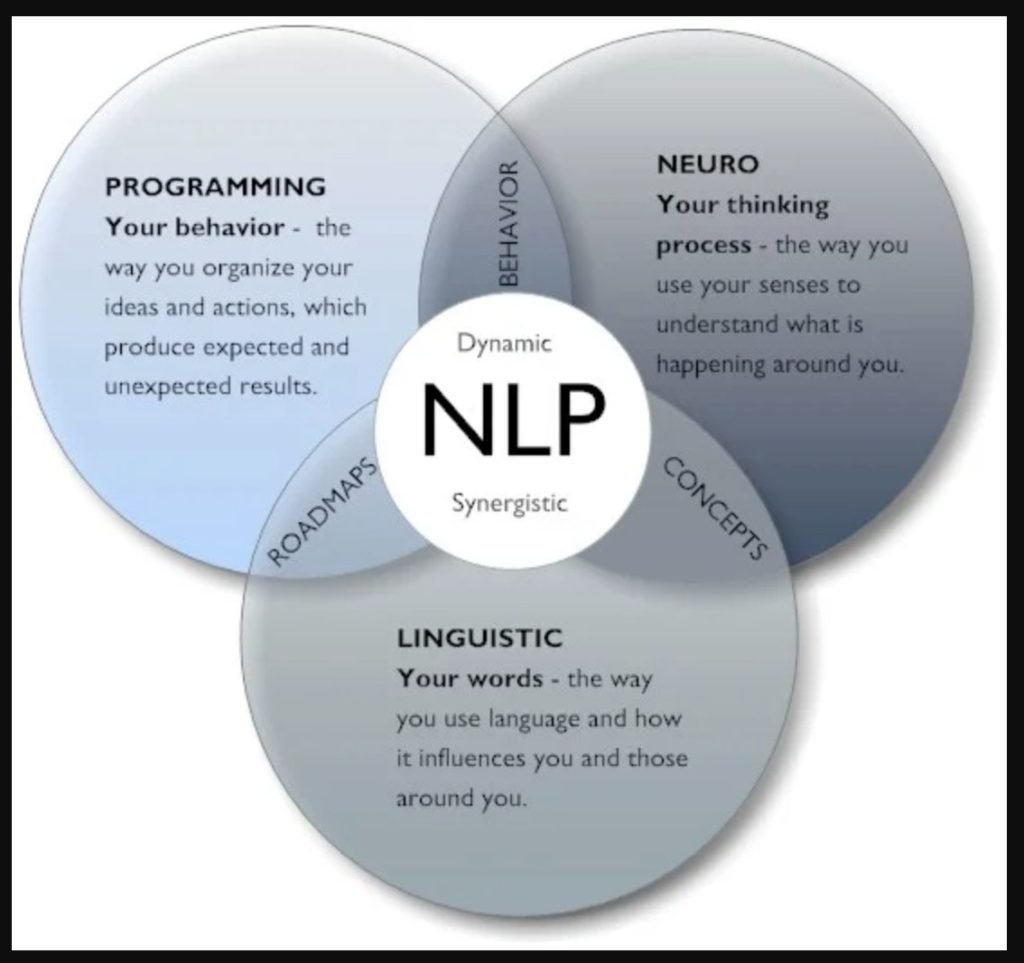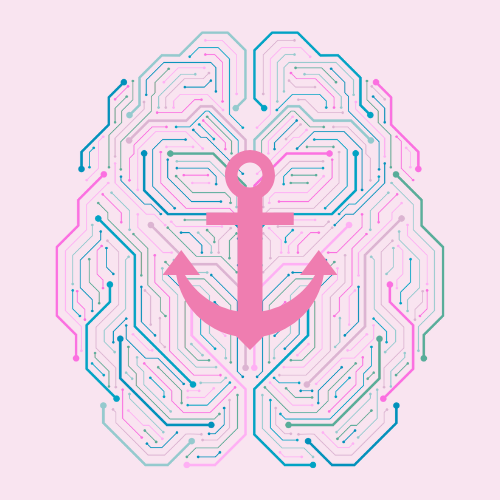Neuro-Lingusitic Programming (NLP) and was founded by John Grinder and Richard Bandler in the early 1970’s.
Neuro (relating to the mind, mindset & our thinking)
Linguistic (language – verbally & non verbally)
Programming (our patterns of behaviour and our emotions)

Neuro-linguistic programming is intended to help people understand their own minds and how they come to think and behave the way they do.
With NLP techniques, people can learn to manage their moods and emotions and “reprogram” the way they process information.
At the same time, NLP is designed to help people see why they have been successful in the past and determine how they can most easily and efficiently repeat that success in other areas of their lives.
NLP therapists believe that their clients have the answers to their problems within themselves; it is simply a matter of helping them draw out those answers.
Where can NLP be used
Neuro-linguistic programming has been applied to achieve personal development or work-related goals, including increasing productivity and moving forward in one’s career.
It has also been used in the treatment of mental health issues such as:
- Anxiety
- Depression
- Fears and phobias
- Poor self-esteem
- Weight management
- Substance misuse
- Stress
- Post-traumatic stress disorder (PTSD)
NLP techniques:
- Belief changing: Replacing negative thoughts or beliefs.
- Reframing: Putting a situation in a different context to elicit an adaptive reaction instead of following the same maladaptive behavioural patterns.
- If you are in the car trying to get somewhere and your partner tells you “Grrr we are stuck in this traffic.”, Say on purpose “This is such a wonderful opportunity to be spending time together.” Have fun with it and reframe positively when you hear negativity.
- Anchoring: Associating an external or internal trigger with a healthier response until it becomes automatic
- If we start talking about lemons, their smell, their taste, the colour, the image of you eating one, you will begin to salivate. The image of the lemon is anchored in yourself.
- Think of an emotion you want to feel (happiness, confidence, calmness). Close your eyes and think of a moment you were feeling that emotion. What did you see? hear? feel? taste? smell? To anchor that feeling, press the part linking your thumb to your index. Close your eyes and keep reliving the moment. You will create a neurological stimulus response, which will allow you to go back to that feeling when you press again that part. You can do it also pressing your lobe or any other stimulus you want.
- Visualisation: Forming a mental image of something we want Visualisation involves:
- Picturing yourself in the future.
- Achieving your goals.
- Living the life you want.
- Dissociation – Identify an emotion that you want to get rid of (fear, rage, discomfort..). Imagine you can float out of your body looking at yourself having this emotion. You can then float again out of it, meaning “you look at yourself looking at yourself”. This will help distance yourself from the emotion.
- Visual-kinesthetic dissociation: Guiding in reliving trauma by evoking an imaginative out-of-body experience
- In most instances, events may be visually replayed from an overhead view, or from the viewpoint of a bystander. The idea behind the different perspectives is that the person can relive the trauma in a less-stressful environment, as they are not directly involved.
- It is also known as the Rewind technique.
- Not only is the goal to reduce traumatic memories, but also to allow the patient to learn from the event, and understand why it happened.
- Swish is about reprogramming your mind from an unwanted behaviour to a desired behaviour. If you link an emotion to an unwanted experience or behaviour. Swish is the process to disrupt that link.
- For example, linking the act of “putting your hand to your face with a cigarette” to a feeling of pleasure, make horrible thoughts present or play loud noises. I will try this with sugar and let you know how I get on.


